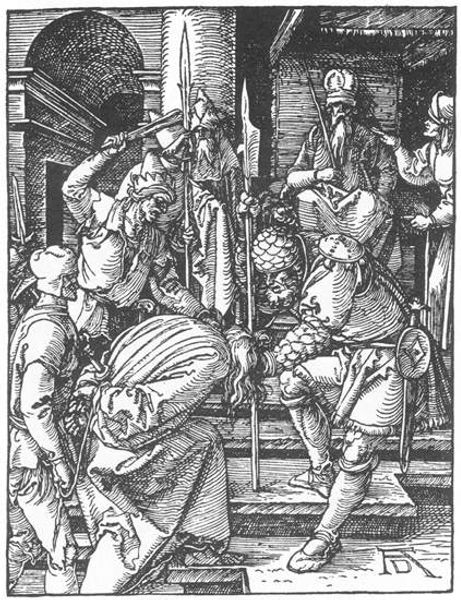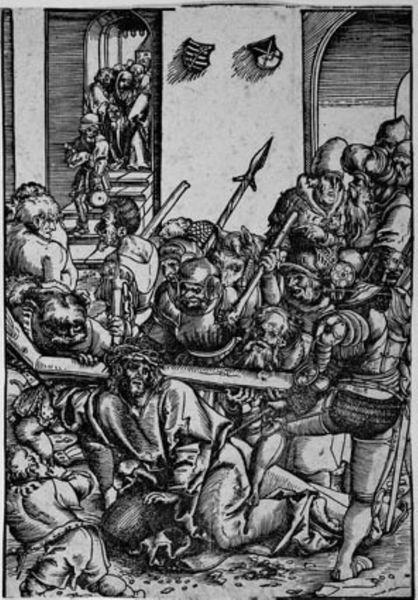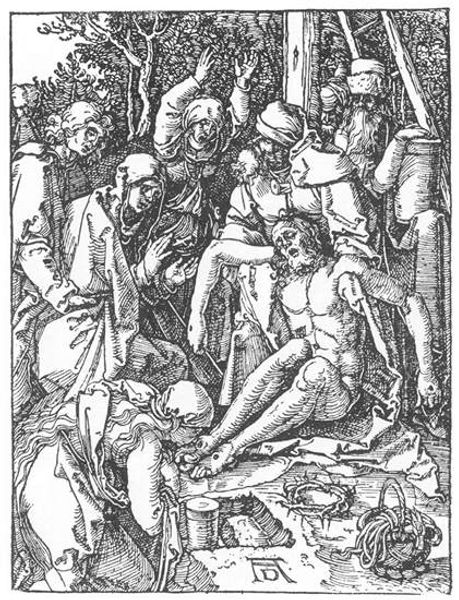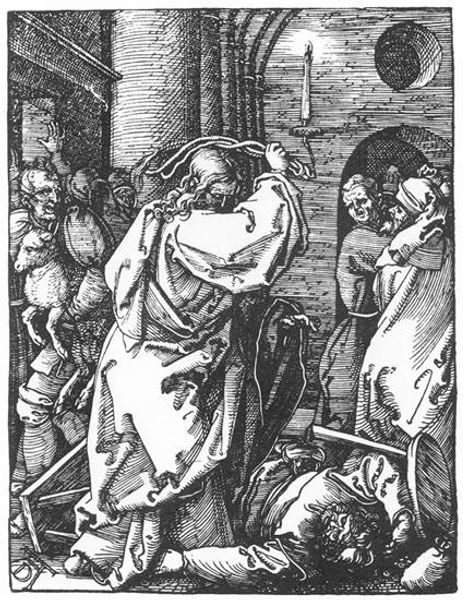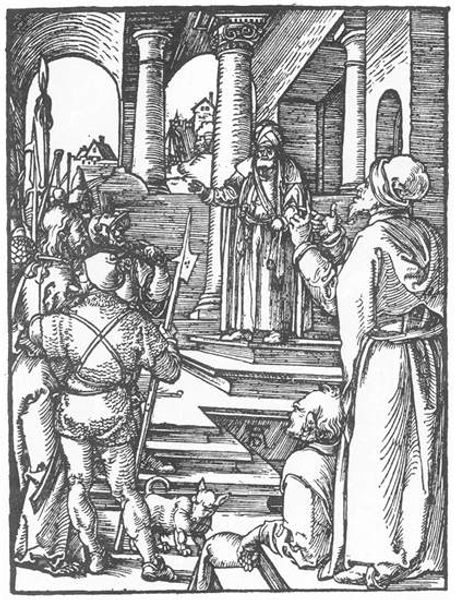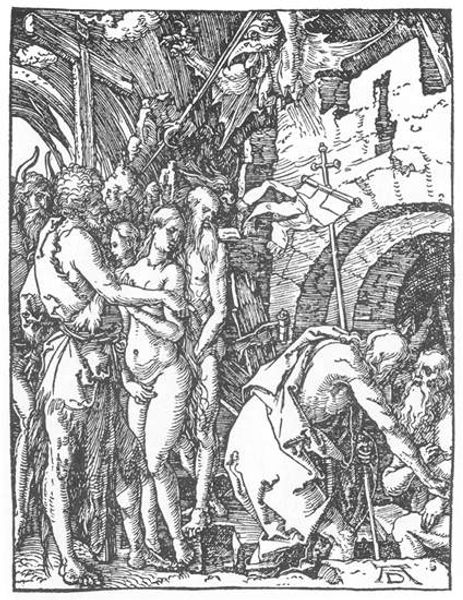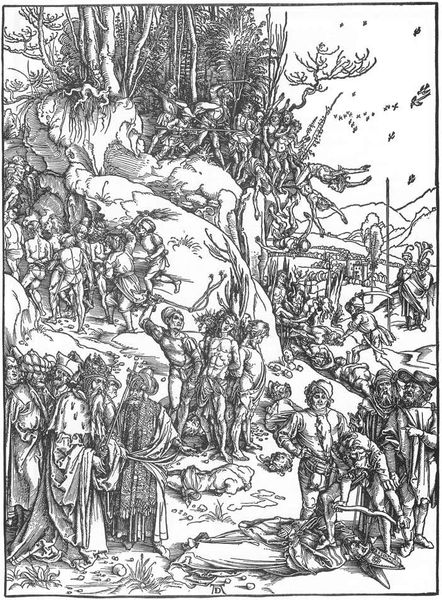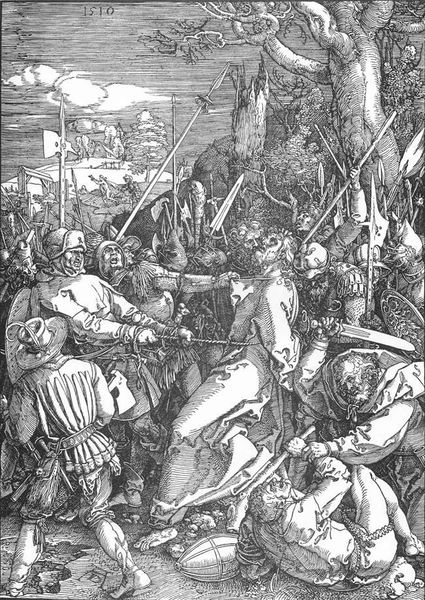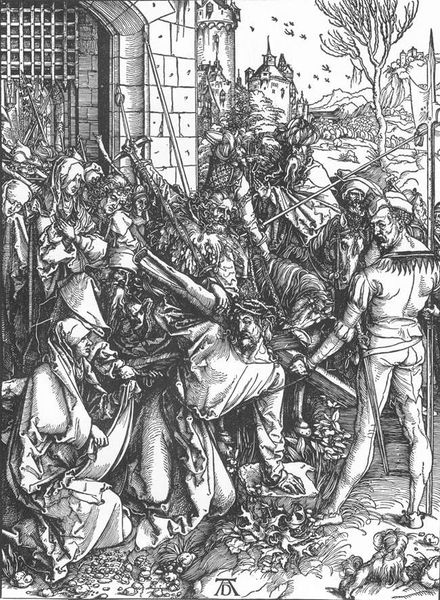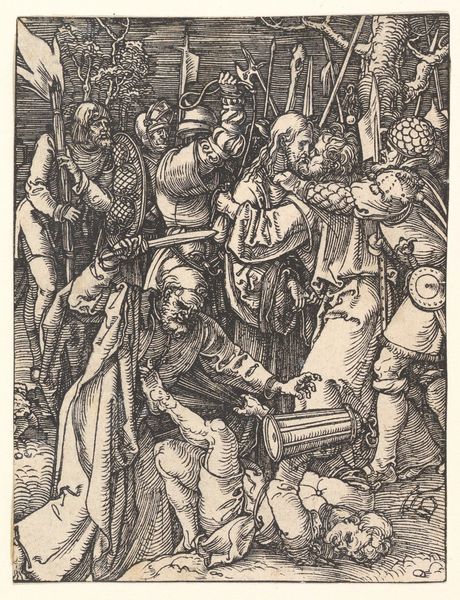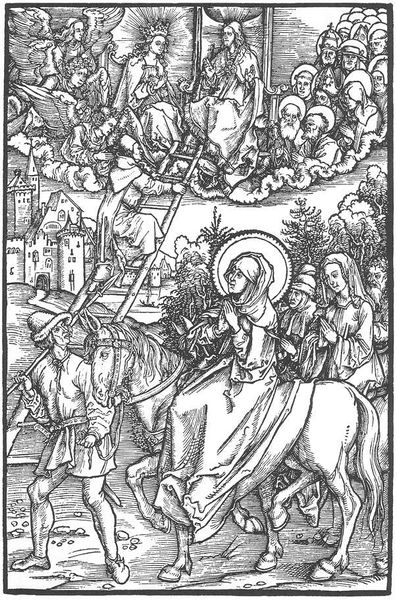
Copyright: Public domain
Editor: Here we have Dürer's "Martyrdom of St. Sebastian," made around 1495. It's a print, so an engraving or woodcut, and the detail is astonishing. It’s intensely graphic; it evokes a sense of morbid fascination. I’m wondering, what catches your eye when you look at this? Curator: What *doesn't* catch my eye? It’s a symphony of textures, isn't it? Those frantic, scratching lines depicting foliage practically vibrate. Then there’s St. Sebastian himself – a weirdly calm figure in the middle of chaos. He's not screaming or contorted; rather, a stoic emblem against a panorama of almost Boschian absurdity. Editor: Boschian absurdity? Could you elaborate? Curator: Sure! The torturers, see, they're not grand villains; instead, they're everyday thugs fiddling with crossbows, wearing these sort of ridiculously elaborate hats. The composition is not symmetrical, as the Italian Renaissance masters preferred. What do you think the choice of the landscape setting conveys? It certainly is very specific. Editor: Hmmm… It feels very *present,* a place someone could walk into, rather than an abstract stage for suffering. Perhaps it emphasizes that this kind of violence happened, still happens, anywhere and everywhere? Curator: Precisely! And those seemingly arbitrary details of life continue: a little bridge, a cluster of houses by the lake… Durer lets you know that while we focus on the tragedy in the center, life flows undisturbed. Editor: It definitely gives you something to think about… This wasn't just a remote religious event. Thank you, that was fascinating. Curator: Absolutely, such art endures not just due to the skillful artistry, but for its power to still unsettle and stir.
Comments
No comments
Be the first to comment and join the conversation on the ultimate creative platform.
